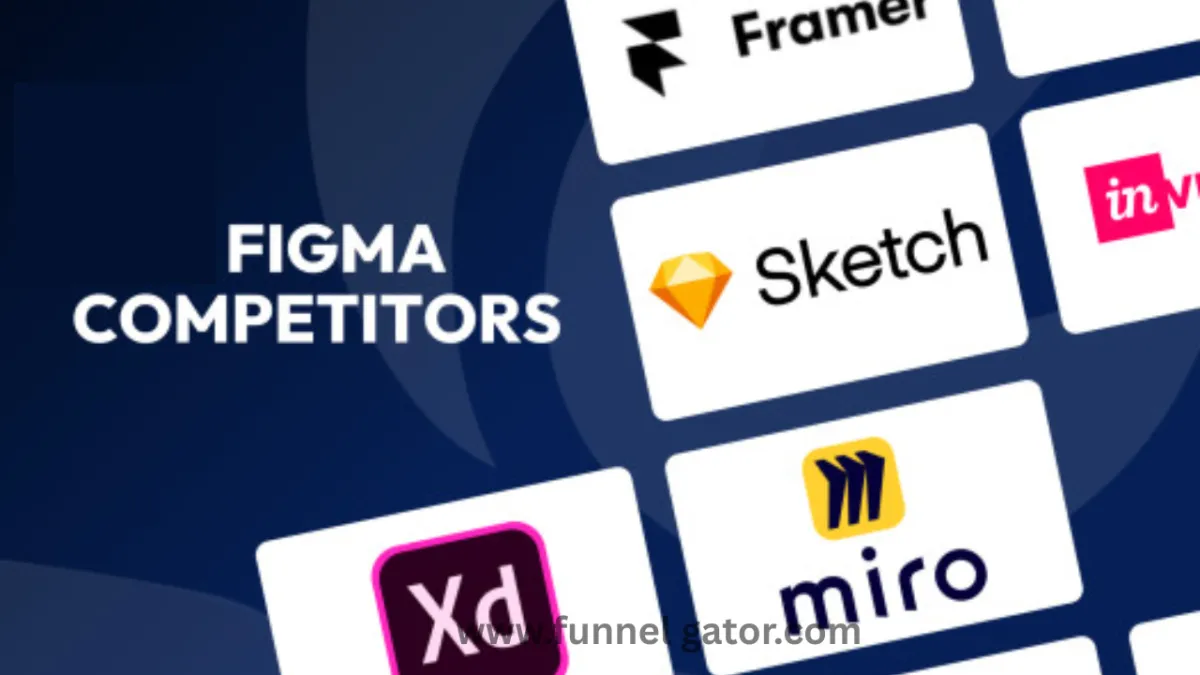
Top Figma Competitors in 2025: A Clear Guide for Designers
If you're a designer, chances are you've heard of Figma. It’s been the darling of the design world for years now—thanks to its cloud-based structure, real-time collaboration, and intuitive interface. But as amazing as Figma is, it's not the only design tool out there. Whether you're looking for a more budget-friendly option, different features, or just something fresh, plenty of solid Figma competitors are worth considering.
Let’s break down some of the top alternatives, share real experiences, and help you choose the right tool with confidence.
Why Look Beyond Figma?
Let’s start with a quick story.
A small startup team in Berlin—let's call them PixelForge—was using Figma for everything. But over time, they realized that their growing needs required more integration with animation tools, tighter developer handoffs, and offline functionality. They started exploring Figma alternatives, and what they discovered transformed their workflow.
You might relate to that story. Whether you’re a solo freelancer or a design lead at a big company, having the right design tool can be a game changer.
What Makes a Great Figma Competitor?
Before diving into the list, here are some key things to look for in a solid Figma competitor:
Ease of use: Is the tool beginner-friendly?
Collaboration features: Can teams work together easily?
Prototyping and animations: Does it support interactive design?
Developer handoff tools: How well does it work for frontend teams?
Pricing: Is it cost-effective?
Cross-platform compatibility: Does it work on Windows, macOS, or web?
With that in mind, let’s explore the top players.
1. Adobe XD
Adobe XD is often the first name that pops up when discussing Figma alternatives. Backed by Adobe, it's a powerful design and prototyping tool used by professionals worldwide.
Highlights:
Smooth integration with Adobe Creative Cloud (Photoshop, Illustrator, etc.)
Advanced prototyping and animation features
Offline work support
Great for designers already in the Adobe ecosystem
Drawbacks:
Collaboration features lag behind Figma
Steeper learning curve for beginners
📝 Pro Tip: If your team is already using Adobe tools, Adobe XD may be a seamless transition.
2. Sketch
Sketch was once the go-to design tool for UI/UX designers. While Figma has taken a lot of the spotlight, Sketch still holds strong, especially for macOS users.
Highlights:
Powerful vector editing and design tools
Large plugin ecosystem
Great support for design systems
One-time payment (as opposed to subscription)
Drawbacks:
Mac-only (no Windows support)
Weak real-time collaboration (though they’ve improved this recently)
💡 Anecdote: A freelance designer in Austin told us, “I still swear by Sketch because it’s lightning-fast for me. I do most of my heavy design work offline anyway.”
3. Framer
Framer is ideal for designers who want to go beyond static mockups. It's one of the few tools where design meets real code-level interactivity.
Highlights:
High-fidelity prototyping
Built-in React support
Super modern UI
Great for motion design
Drawbacks:
Might be overkill for basic wireframes
Learning curve for non-technical designers
🧪 Best For: Teams working closely with developers or building interactive product demos.
4. UXPin
UXPin stands out because of its ability to bring code components directly into the design process. If your team values design systems and code consistency, UXPin could be a winner.
Highlights:
Real-time collaboration
Works with real HTML/CSS/JS components
Accessibility tools built-in
Enterprise-level features
Drawbacks:
More expensive than most tools
Interface can feel complex at first
👩💻 Anecdote: A product manager at a fintech startup shared, “We moved to UXPin because we needed true dev-design alignment. It’s been a game-changer for component-driven design.”
5. Penpot
Penpot is a rising star among open-source design tools. It’s collaborative, browser-based, and completely free—making it ideal for budget-conscious teams or open-source lovers.
Highlights:
100% free and open-source
Team collaboration in real-time
Works on any OS (web-based)
No vendor lock-in
Drawbacks:
Still maturing in features
Limited integrations compared to others
🌱 Why It’s Special: If you're part of a community-driven or privacy-focused team, Penpot is worth exploring.
6. Lunacy by Icons8
Lunacy is a lesser-known gem. It’s a lightweight design tool that works perfectly offline and supports .sketch files natively.
Highlights:
Fully functional offline
Fast and lightweight
Free to use
Great for Windows users
Drawbacks:
Collaboration isn’t as robust as Figma
Fewer third-party integrations
💸 Best For: Freelancers and Windows-based designers looking for a free alternative.
A Quick Comparison Table

How to Choose the Right Figma Alternative (Step-by-Step)
Choosing the right tool can feel overwhelming. Here’s a simple step-by-step approach:
List Your Priorities: Do you care more about collaboration, animation, or offline access?
Test Multiple Tools: Use the free trials or freemium plans to get a feel.
Ask Your Team: Align with what your developers or co-designers need.
Check Integration Support: Make sure the tool fits your existing tech stack.
Evaluate Pricing: Consider your budget—especially if you're a startup or freelancer.
🎯 Pro Tip: Always start with small projects to test a new tool before switching fully.
Final Thoughts: Figma Is Great—But It’s Not the Only Star
While Figma is undeniably excellent, your design tool should match your unique needs. Whether you’re looking for a more affordable option, a tool with offline capability, or one that plays nicely with code, there’s a Figma competitor out there waiting for you.
Take the time to explore, test, and find the perfect match. After all, the right tool doesn’t just support your work.


